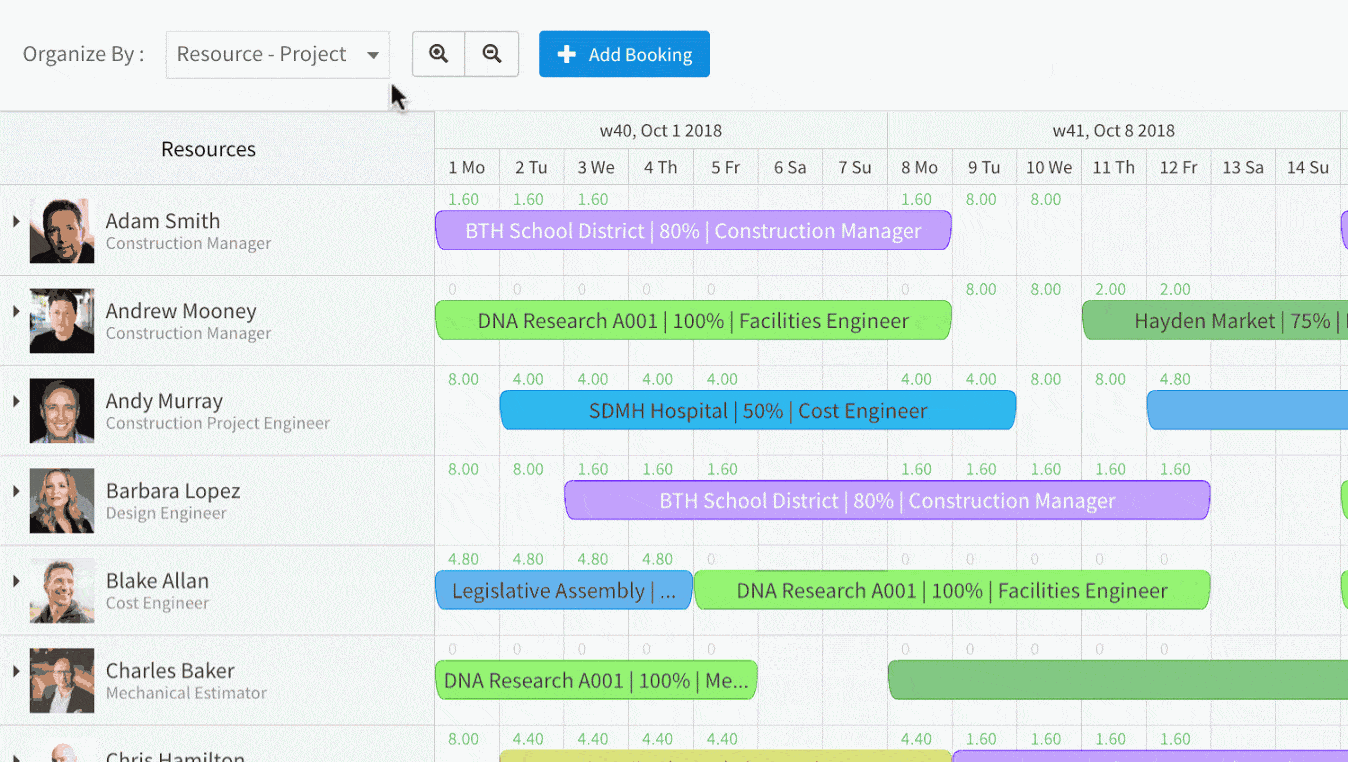
Resource Management Trends in 2021
Resource allocation is the most significant factor in project management for driving growth. Unfortunately, not all businesses can solve this puzzle of how to do it the right way. Project managers mostly miss the mark and are unable to manage resource allocation to their benefit. Weak or inaccurate resource management is now rated as the 2nd most prominent challenge in managing projects. Isn’t it difficult to figure out how to distribute the resources, finances, and time in a profitable way? Many large organizations have created robust frameworks and practices around resource management that ensure business efficiency. But the best solution is using good resource planning software as that can help in executing these frameworks. Also, as resource allocation is maturing, there are numerous important trends that are arising. Organizations are realizing that effective resource management is not possible if they rely on manual practices like spreadsheets or if they work in silos.
Today, many businesses of all sizes and across industries don’t mind investing in state-of-the-art resource allocation software that meets their individual requirements. So, let’s discuss the top 10 resource management trends.
1. Resource Availability Heat Map
The resource allocation strategy would always rely on resource availability. In an ideal scenario, when a new project is starting, the project manager would check on which resources are available and who can be assigned to the project. Maybe you identify some skilled resource after a lot of hunting, but then you find out that he or she is already overloaded with tasks. Imagine if you could get a consolidated picture of all the resources in your organization irrespective of their location. And what if you could see their experience, expertise, availability, and a lot more? Wouldn’t that solve most of the resource conflicts that you face? eResource Scheduler is a leading resource allocation tool that provides you an overview of all the resources in just a few clicks. What’s more? Once a resource is assigned a task, the status is updated in real-time providing accurate utilization insights.
2. The Rise of Virtual Teams
There has been a rise in virtual teams and remote working trends due to the recent pandemic. Moreover, as projects are getting trickier by the day, managers require multiple people with varied skills. Finding resources with the right expertise in a specific location is a big challenge. But thankfully, the trend of remote working has gained a lot of momentum. Besides, the availability of good collaboration tools is a boon. Today, most companies have their teams operating in different geographies and across time zones. And remote teams offer many advantages for a business. For example, lesser overhead costs, no travel time, better work-life balance, and improved productivity. Having said that, companies need the right resource management tool if they want their virtual teams to succeed. Best-in-class resource allocation tool like eResource Scheduler has powerful filters, intuitive interface, and a centralized repository of all resources that enhances resource allocation.
3. Estimations Powered by AI
While making a project plan and allocating resources, project managers specify the effort required to complete the task. How accurately this estimation is done has a direct impact on the project plan and your forecasts. But, in reality, when the project moves to the execution phase, these estimates are not so precise. So, how can you make project planning and resource management more efficient? Check out eResource Scheduler and forget working on these estimates manually. Let this AI-enabled tool suggest you realistic and accurate estimations for each task and manage your resources and projects efficiently.
4. Dedicated Resource Managers
Resource allocation and management are one of the most important tasks of a service organization. But as the size of teams is expanding these days, project managers find it difficult to do so. Because of this, many organizations now hire dedicated resource managers. A resource manager’s primary role and responsibility is to allocate resources to various tasks. They also manage resource utilization, avoiding resource conflicts, ensure balanced resource scheduling and management, and a lot more. They inform the management about how much resource hiring is needed at what time. If they use a resource management tool, they can pull-out business intelligence data which can enhance their company’s resource allocation and management.
5. Cloud ERP
Companies have been storing their data on cloud from quite some time. So, what’s new? It’s how the ERP community is more involved with it. Till some time back, ERP users were skeptical to save their company’s data on to cloud storage. But now, you see many organizations placing large amounts of ERP data in cloud storage. This is because of the many benefits it offers. Did you know that the cloud computing market is slated to touch the $258 billion mark in 2021? Imagine if you can access a global organization’s ERP sitting anywhere in the world. That’s the first and foremost reason for companies adopting cloud ERP. It provides better data security, and is also simpler to manage, along with lower costs. So, according to the trend, cloud ERP will continue to diversify and provide more features and customization options in 2021.
6. Centralized Database of Company’s Resource Pool
As mentioned earlier, with offices of organizations being located across the globe, and in multiple locations, a centralized database of all company-wide resources is a must. To do resource planning and allocation efficiently, project managers need to have a clear visibility of:
- The skill set or competency of all employees
- The availability and future plan of all resources
If there are multiple resource pools categorized by teams, competencies, location or geography, availability, etc. then the project managers can’t do resource allocation easily. What if they can access a central database easily? Wouldn’t that help them to assign the right individual to the right task? And then their job would become easier. This database also helps them create the best team, with resources who have varying levels of experience and competencies.
7. Updated Resource Pool that Complies with Market Needs
Organizations keep replenishing their resource pool to match up the ever-dynamic market needs. For doing that, you need to consider the following factors:
- The skills in demand, and competencies that are not so relevant now
- Latest market trends
- Suitable training and development for resources in the team
When the project or resource managers maintain a central database of all company’s resources, it includes all details. Everything about each resource such as the area of specialization, experience, location, availability, certifications, etc. With a resource management tool, you can simply use the advanced filters and identify the ideal resource in just a few clicks.
8. Seamless Collaboration Among Resources
What’s one of the biggest roadblocks of the resource allocation process? It is real-time visibility. But with the right resource management tool, all your resources can update their current status in real-time. In just a few clicks, a tool like eResource Scheduler updates all the resource availability, utilization, productivity, etc. in real-time. You also get integrated dashboards that enable centralized structure, collaboration, and focus on one timeline. Everyone involved in a project, including stakeholders, can easily collaborate, check the status, and get regular updates.
9. Allocate Right Resource for the Right Project at the Right Time
Selecting resources is a vital task and it also involves a huge cost. Most Businesses feel the heat of maintaining the quality of their projects with decreasing budgets. The best approach for resource allocation is “best visible best fit” and not “first available first fit”. When resource availability is visible in real-time, making such a decision is very easy. A good resource management tool helps you make the best decision in real-time. You can prioritize your projects, align your best people across the projects and not on one high-priority project. This ensures a balanced mix of resources across teams and gives you a good utilization number.
10. Take Advantage of a Digital Dashboard
As all the company’s resources, entire projects, and booking data is saved in a single repository, you can easily create comprehensive dashboards and detailed reports by using business intelligence theories. You can design customized portals, analytics, dashboards, and reports using a resource management tool like eResource Scheduler. This information can come in handy when you need to forecast your future business requirements. That’s not all! You can control data visibility with an amalgamation of security rights, advanced filters, and portal designs. Any user of the system can see the relevant information as per their role or requirement.

eResource Scheduler – The Best Resource Management Software Available
The rapid advancement in the field of technological systems has completely transformed the processes of resource allocation, utilization, and resource management. Enbraun’s flagship product named eResource Scheduler, can be installed in both Cloud and On-Premises versions. With its brilliant features such as high configurability, intuitive design, and ease of use, many organizations have been using this award-winning tool since 2011. This tool does tick off all the boxes with the advantages it offers at a reasonable cost. This resource management software is very easy for anyone to adapt to. But if you need clarifications, Enbraun offers a personalized Account Manager to help you design and configure various fields and forms and pull reports your need for your business. Register soon for a free trial and see how you can transform your resource allocation and management.





